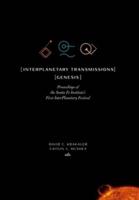Publisher's Synopsis
The long-term evolution of both the atmosphere and the surface of Mars can be understood by examining the history of volatiles in the Mars atmosphere, their non-atmospheric reservoirs, and the processes of exchange between the two. Clearly, the present state of both the surface and the atmosphere can only be seen, so that any inferences about the evolution of the climate system are just that, inferences. The processes which control the atmosphere and surface on a seasonal basis, however, are the same processes which can act on longer timescales; only the specific solar and atmospheric forcing will differ. Once the ability of each process to affect the seasonal behavior is understood, the long-timescale forcing may be applied to the various processes in order to clearly identify the ability of the processes to act over the entire history of Mars. The areas of surface-atmospheric interaction of Mars are addressed in the ongoing research. The climate system on Mars is controlled by processes involving the exchange between the surface and atmosphere, so it is important to understand the current behavior of those processes. This is especially so in light of the current interest in understanding Mars; the upcoming Mars Observer mission, and the potential for a future sample-return or human-exploration mission will focus emphasis on this area of Mars science. Jakosky, Bruce M. NASA-CR-183113, NAS 1.26:183113 NAGW-552...












